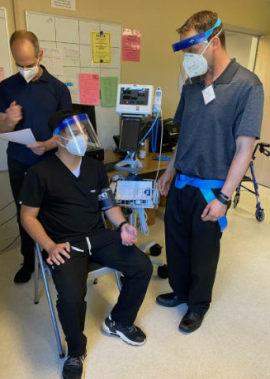 Submitted by Jamie Funk, Therapy Recruiting Resource
Submitted by Jamie Funk, Therapy Recruiting Resource
Meet Joe Pergamo (pictured top left), the Director of Rehabilitation at Rainier Rehabilitation in Puyallup, Washington. Joe joined our organization in March 2019 and has become a huge part of the Pennant Washington team, not only as a stand out leader in his own facility, but also as someone who pitches in for any of our Washington facilities if they need help. He has even driven five hours (one way) to Walla Walla on a repeat basis when they were short a physical therapist.
“Joe is a remarkable leader! He has been instrumental in increasing the awareness amongst the staff at Rainier’s rehab team of the benefits of providing therapy services to residents to maintain their optimal function,” says Brett Watson, the ED at Rainier Rehabilitation. “He has demonstrated through his leadership how to improve the quality of life of our residents through consistent rehab interventions and skills. Joe is patient, kind and long suffering. He is not only supportive of his therapy team, but he gets in and supports nursing, activities, and business office staff with their needs. He does this while maintaining a strong productivity percentage.”
“Joe leads with humor, kindness, and the altruistic belief that therapy changes lives for the better. He is humble and leads by example with true ownership of his program,” says Mira Waszak, the Therapy Resource for Washington.
Joe was inspired to become a therapist because he wanted to work in health care and enjoyed working out and fitness. Initially, he obtained his PTA degree but went back to school to earn his Master’s Degree in Physical Therapy. He heard about a DOR opening at Rainier from a former supervisor who put him in contact with Mira to learn more. “I had spoken to Mira several times, and she was very helpful and encouraged me to become a rehab director. She provided excellent mentoring to ease me into the role. I met Brett and Stacy (the ED and DNS at Rainier) along with several RCMs, and I believed it was an excellent opportunity for me to be a director. I was impressed with Brett and Stacy’s approach and style and the way they cared for long-term care residents,” Joe remembers.
Joe’s favorite Ensign core value is Ownership. “I believe when employees take pride and responsibility in and for their work, it elevates everyone’s quality of care. Pride and ownership are contagious. When you are around other people who have ownership, it makes the ‘work’ more rewarding. You don’t want to let yourself, your co-workers or residents down. I feel that there are many owners at Rainier in the therapy department and throughout the facility and we all feed off of that positive energy.”
This affinity for ownership is not going unnoticed by the facility administrator. “Joe is faced with multiple challenges in caring for residents that have many needs. Joe is providing care to residents who need airway support — patients who need a level of care that is unique and challenging. He has not been afraid to get in and learn how to provide services to these individuals that have benefited these folks in many ways,” says Brett Watson.
Joe loves his facility and team because the entire facility is very devoted and dedicated to their residents. They practice holistic and selfless interaction with their patients. Joe is a strong believer in co-treatments and collaborative care and he works hard to be mindful of recommendations from all disciplines. “I always try to be open to opportunities to provide therapy services to improve residents’ quality of life,” Joe says. ”I believe all residents are therapy candidates and we just have to be open to all opportunities.”
When not working, Joe is spending time with his wife, son and three dogs. He is in the midst of a home and yard renovation and also makes time to exercise. He loves living in Washington, which he feels is the perfect mix of metropolitan life and breathtaking nature, home-town charm and cultural diversity. For any of you science fiction buffs out there, Joe’s favorite movie is the “Back to the Future” series.
“I call Joe my diamond in the rough,” says Mira. “He is very introverted but he doesn’t let that impact his effectiveness as a leader. I have had the privilege to treat patients with him side by side, so I have first- hand experience of his clinical excellence! On top of everything else that has been thrown at our leaders this crazy year, Joe has gone through some serious personal challenges but continues to show up 150% every day – #belikejoe!”
The feeling is mutual. “Mira is an excellent mentor and resource,” Joe says. “She provides motivation and encouragement every time we interact. Although I have only known her for just over a year, it seems like we have been friends for many years. Mira provides hard truth, sound advice, humor and truly listens to my concerns.”



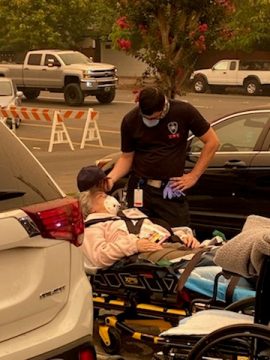

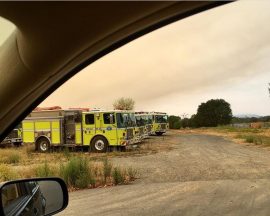 By Milena Milenkovic, OT/DOR, Park View Post Acute, Santa Rosa, CA
By Milena Milenkovic, OT/DOR, Park View Post Acute, Santa Rosa, CA
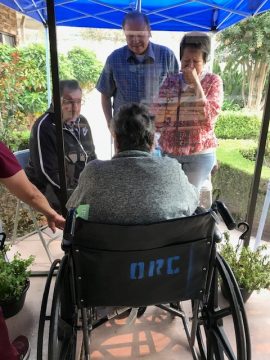 On March 13, 2020, President Trump declared a national emergency, citing an outbreak of COVID-19. On that same day, CMS strictly restricted in-person visitation to only compassionate care situations in skilled nursing homes in order to prevent the introduction of COVID-19 to our most vulnerable population: the elderly with pre-existing medical conditions.
On March 13, 2020, President Trump declared a national emergency, citing an outbreak of COVID-19. On that same day, CMS strictly restricted in-person visitation to only compassionate care situations in skilled nursing homes in order to prevent the introduction of COVID-19 to our most vulnerable population: the elderly with pre-existing medical conditions.

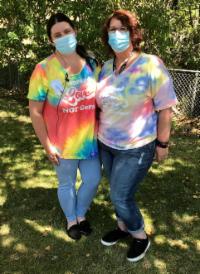
 she met her now husband, Jan. An interesting fact is that UOP had the same number of students as the entire town of Willits. Despite the crowd, Avenlea loved her experience there and had great clinical exposure with patients beginning in her junior year.
she met her now husband, Jan. An interesting fact is that UOP had the same number of students as the entire town of Willits. Despite the crowd, Avenlea loved her experience there and had great clinical exposure with patients beginning in her junior year.